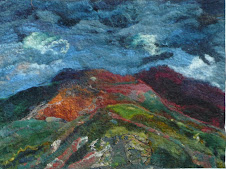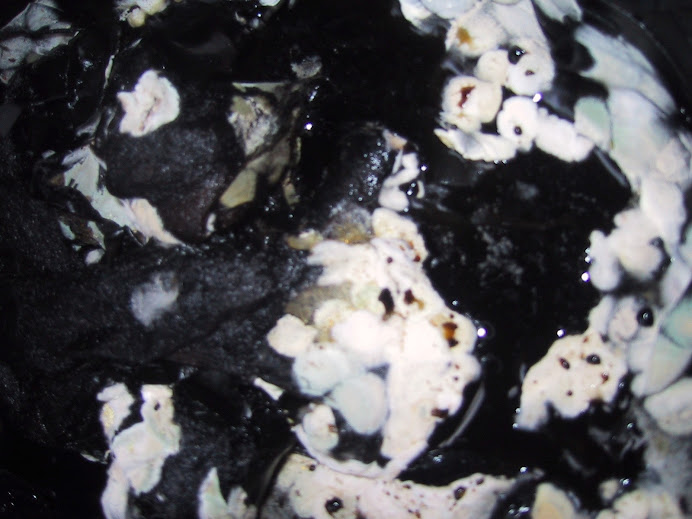.Maiwa's
blog describes how you need to scour -ensure that fabric is free of all natural oils and grease before dyeing-the conventional view. Cotton needs a prolonged boil with washing up liquid and washing soda, silk just a gentle wash in washing up liquid to remove dressing and wool a scour with washing up liquid either cold or hot depending on your preference. .India Flint on her
blog as she often does takes an original and thought provoking point on the issue of scouring
India points out that Japanese mordant methods which features many dips with drying in between before starching and says ...".and if it's so strongly attached to the cloth that you have to boil it off with dangerously strong chemical assistants then you might as well leave it there......"
hmm
but then it is not starch added after mordanting being removed by boiling cotton in washing soda and washing up liquid it is the natural oils in the cotton being removed so you
can mordant.
Do we need to remove the oils from cotton? The sericin from silk and the lanolin form wool?
.Anything which has been washed a lot is going to be okay for dyeing and DOH! stupid of me - the point that India has made that washing powder often contains sodium carbonate which will act as a mordant had not occurred to me. So well washed cottons linens and silks may not need scouring or indeed mordanting. You can check for the first with cotton by dropping a drop of water onto a dry cotton. If the water beads the cotton contains natural oils and so the water does not penetrate. If it goes flat and soaks in the cotton contains no oils.
My thoughts are like this:
If water cannot penetrate new cotton then nor will the mordants or dyes .
Many years ago when I first I tried dyeing cotton with natural dyes I was very disappointed at the pale patchy colour. Then I discovered JN Liles The Art and Craft of Natural Dyeing. It was a light bulb moment for me and an "aha! That's what I am doing wrong" . He emphasised the importance of preparation and tells you how to prepare all natural fibres. by scouring.
When I read the two blogs more carefully I realise what I had thought was a debate about scouring was two people talking (mostly) about two different things. Maiwa about ridding new fibres and fabrics of oils etc and India Flint mostly talking about using recycled fabrics and washing silk (which had previously been dry cleaned) However her point that her steaming of bundled fabrics really pushes the dye into the fibre is something really worth worth thinking about and trying. All the fabric bundling I do is is setting the dye over a long period with solar heat.
As I said
Interesting
Provided you are natural dyer :)
Incidentally I go into scouring in all my dye books Currently on offer with 20% off on my website (Till the end of January) but both blogs are worth reading for more on the subject. And India Flint's Eco Colour is one of the great classics of the natural dyeing world.
Muslin and silks on the line.































